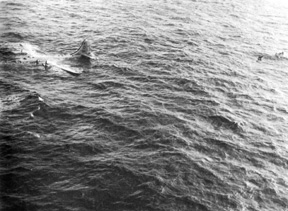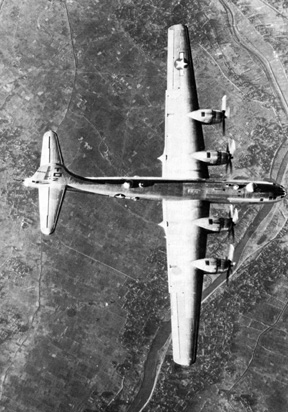|
B-29 Emergency Mobile Repair and Test Flight Crewmember by Art Jones |
||||||||||
 |
 |
|||||||||
|
Second Hand Stories The Long Way Home During the final year of World War II, as stateside B-29 crewmembers, who had served as flying instructors for several groups of bomber crews, we eagerly absorbed and passed on any information available about the overseas fighters, we had helped train, who were winning the war with Japan. Some of the first reports about the bombing of Tokyo and vicinity had to do with the mileage involved, which was about 1,500 miles to the target area and the same number for the return trip to the bases in the Marianas Islands. This meant special fuel arrangements had to be made for the big machines. One of the two bomb bays was fitted with a special tank to hold the needed extra gas to assure a safe round trip. This, of course meant an extra weight to be handled and the loss of half of the bomb carrying capacity. After a time we began to hear about a Bomb Group Navigator who discovered the strong winds and their directions that were encountered on every run by all the planes of the mission. It seems that for the first half of the Japan run the winds blew from East to West; then the last portion of the same flight pattern had the winds blowing equally as strong from West to East. This was the beginning of the Jet Stream cooperation between Aviation and Meteorology. Many years after the end of WW II, the identity of the fabled Navigator became known to me. It turned out to be a High School and College acquaintance named Ward Grosz. Ward recalled some of the details of his Jet Stream experiences more than a half-century after they happened. This is how it went. “Our first few missions flying from Saipan to Japan were tactical failures. We lost almost as many B-29's as we scored bomb hits on the targets. Roughly following procedures developed by the 8th Air Force with B-17 bombers in Europe, we flew in loose formations from our departure base until we approached the target islands. We then tightened to a close formation and climbed to 30,000 feet and located the initial point (I.P.) to start our bomb run. From the I.P. to target the flight pattern had to be a straight line so the famous Norden Bomb Sight would function correctly, but unfortunately this program also allowed enemy artillery to track us with much more efficiency.” |
||||||||||
 |
||||||||||
| “Our meteorologists predicted 40 to 50 mph winds, but we actually got involved with winds up to 160 mph at high altitude. The crosswind condition and resulting ‘crab’ of the airplane gave the Norden Bomb Sight serious problems in tracking correctly. This also cut down on our target successes.?
“It didn't take long for the mission planners to radically alter their original concept of bombing Japan. Formation flying was scrapped which resulted in basically each crew flying their separate mission, but direct straight line was still the way we were to fly going to the target and back to base. Fuel consumption was reduced a certain amount, but many airmen had to be rescued by the Navy amphibious planes (Dumbo's) and submarines stationed the last few hundred miles of the route back to Saipan.” |
||||||||||
|
Photo ctsy USN and Steve Birdsall's |
||||||||||
|
“I had noticed we were heading into the cross winds in two different directions on every mission to bomb the Japanese Islands. The extra power it took to crab and stay on course seemed exorbitant. My calculations showed we easily could have been driven over two hundred miles off the straight line that was the ‘official’ way to go.
“We Navigators all had to keep a flight log showing airspeed, direction, and time of passing each one of the rescue craft on the ‘picket line’ for our possible rescue. I was actually the first course plotter who felt he had to rearrange the starting heading, and immediately after takeoff aim in a manner that allowed the pilot to just fly the plane without fighting the Easterly wind. At the midpoint of the flight, the wind direction changed 180 degrees which allowed us to take advantage of the Westerly flow of air.” |
||||||||||
| “Amazingly, the very first trip brought us to the target almost an hour before any other ships from our Group arrived. And we landed and had nearly two hours to spare by the time the others got home. Also, we had a good supply of fuel not used.
“All crews were debriefed after each mission to report such things as amount, location and accuracy of antiaircraft artillery, enemy fighter activity, weather and bombing results. “Navigator's logs were turned in at such debriefings. Since I was not following the prescribed route and because I thought my errant ways might get me in trouble, I fabricated a log with entries indicating positions and times on the direct route. That log was turned in at the after mission meetings. However, I always kept a separate log of our actual flight progress to ensure that I could find the target, and more importantly find Saipan on the return trip. That log I destroyed after landing.” |
||||||||||
 |
||||||||||
|
Photo ctsy USN and Steve Birdsall's |
||||||||||
|
“I believe it was on our tenth or twelfth mission when I forgot to take my true log out of the plane and pitch it. We were in the middle of the debriefing process and I had turned in my fictitious log when our Crew Chief came bursting into the meeting and blurted, ‘Lt. Grosz, you forgot your flight log, I found it at your station in the plane. Here is it.’ He handed it in to the officer in charge.
“Two flight logs with different routes for the same mission and written by the same author caused quite a flurry among those who were studying the results of that particular bombing of Japan.” Ward was called in front of a special board to determine if a Court Martial might be in the works. But this seemed to be one of the very few times in a military inquiry when the people who checked his activities happened to be men who were Navigators themselves. After studying the results of Grosz's use of the Jet Stream, the board made the recommendation that all the Bomb Groups would remove any extra weight and carry more bombs on the B-29s and fly the remaining missions with the Jet Stream assist discovered by Lt. Ward Grosz. An interesting finale to Lt. Grosz's military career came about because his was the first Superfortress crew to return to the States after finishing their missions over Japan. They landed at Firfield-Suisan Air Base near San Francisco and were feted as returning heroes. They were scheduled for a couple of days “on the town” before beginning their new duties. Of course, the first order of fun was to head for the nearest bar and toss a few. They were all seated and ready to order when the bartender asked them for their I.D.'s. Ward was nineteen years, going on twenty, at the time. After checking their papers, the bar manager came over and said, “Sorry son, I can't sell you a drink. Come back in a couple of years and you can buy as many as you want, cause by then you'll be a man.” It took a full squad of MP's to stop the Airmen from trashing the bar and maiming all the employees present. End of Page 1, Chapter 4 — Go to Page 2 Or you may go to Cover Page — Introductions — Table of Contents Or you may go to Home - Contact Us - Cold War Hist. - 91st SRS Hist. - Stardust 40 Mission Story |
||||||||||